|
This Webpage Title:
China and Hong Kong - Transport
China - Hong Kong - Macau
China's transport, similar to many other countries, consists of air, sea, road and rail.
The big difference is China's local dependence on bicycles, for getting around and carrying goods. This follows China's past of being a poorer and largely populated nation, where the car was out of reach of most families incomes.
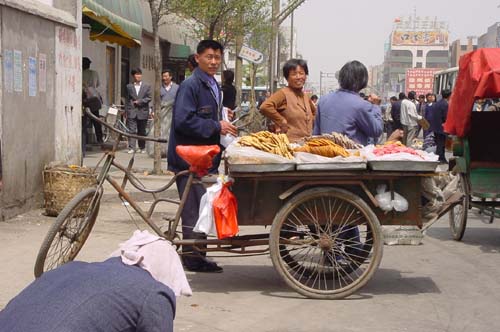
Transportation plays an important role in traveling as a trip begins and ends with it.
Transportation has advanced rapidly with the development of tourism in China. Modern China has a vast network linking land, air and sea, and meeting the needs of travelers in China.
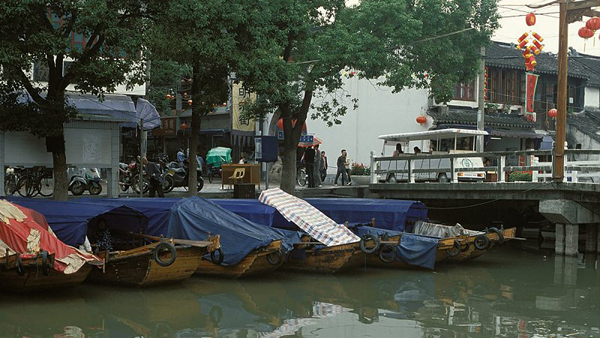
China's airlines are equipped with the most sophisticated aircraft with the latest equipment.

At present, 110 airports have been put into operation, with 659 domestic and 71 international routes available. More routes in port cities will soon be opened. China now has established air links with 39 countries and regions.
Forty-six special train routes for tourists have been opened in addition to the local ones. Water transportation for tourism is also available on rivers and coastal areas. For example, 40 ships have been put into service for tourists.
Moreover, modern vehicles provide excellent services for sightseeing in both urban and rural China. Wherever you go, you will enjoy convenient transport.
Transport in China is by bicycle, road, air and sea. The bicycle is still used as the main means of transport in many of the rural towns and in the capital Beijing.
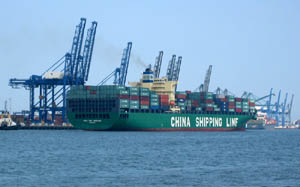
As well as aircraft, long-distance buses are one of the best means of getting around on the ground; they're frequent and cheap (which also translates as crowded and stuffy) but there's extensive services, passable roads and interesting towns and villages en route.
An even better mode is the train, which reaches into every province (apart from Tibet ) along a 52,000-km network. It's cheap, relatively fast and a safer proposition than buses; the only dangers on the trains is getting your luggage pinched or dying from shock at the state of the toilets.
As land transport improves, the romantic days of domestic boat travel are fading. But there are still a number of popular boat trips to be had between Hong Kong and the mainland. The best known river trip is the three-day cruise along the Yangtze River from Chongqing to Wuhan.
Taxis don't cruise the streets except in the largest of cities, and while most cabs have meters they usually only get switched on by accident.
Motorcycle taxis, motor-tricycles and/or pedicabs hunt in packs around most major train and bus stations. They're a motley bunch, but they're cheap and useful if you don't mind sudden traffic-induced adrenalin rushes.

The train network is good with soft-berth cabins for overnight expresses as well as 'hard berth' seats. These seats are most uncomfortable and small, as the Chinese are a smaller race than Europeans.
Buses are most uncomfortable and always full. A bus will not leave for it's destination until it fills up. Seats are narrow and they are very squashed.
Don't be surprised if your bus leaves the bus station and then drives around the city for several hours trying to lure more passengers. Be extremely careful of theft on overnight buses.
Whether you travel by boat, train or bus, it's a good idea to stock up on snack foods. Shops at stations and ports sell bottled water, fresh fruit, peanuts and candy.
Some cities have licensed bicycle rickshaw drivers; they're slow and expensive but fun for a short trip.
In most cities, you can rent a bike. (Don't worry if it breaks down -- there's a repair stand at almost every intersection.)
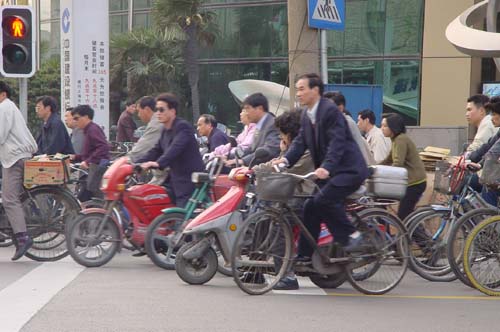
Several cities have subways ( Beijing, Guangzhou, Hong Kong, Shanghai and Tianjin ), although routes can be rather limited.
You can rent a car in Shanghai and Beijing, but it must be driven by someone with a Chinese driver's license.
China's mainland coast is over 18,000 km long, and its rivers total 220,000 km in length. Such excellent natural conditions provide convenience for developing inland river transport and ocean shipping.
The major inland navigable rivers in China are the Yangtze, the Pearl, the Heilongjiang, the Huaihe, the Qiantang, the Minjiang and the Huangpu, not forgetting the Grand Canal between Beijing and Hangzhou.
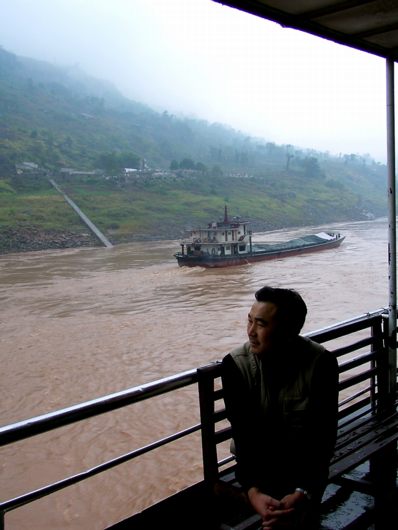
In 1999, navigable inland waterways in China totaled 110,300 km, the volume of cargo transportation was 2,126.3 billion tons/km, and the volume of passenger transportation was 10.73 billion persons/km.
Now there are more than 5,000 berths at some 70 major inland river ports. The Yangtze, the "golden waterway" of China's inland river transport, has considerable annual volume of both freight and passenger transport. Nanjing Harbor, the largest river harbor in China, has an annual capacity of more than 40 million tons.
Ocean shipping in China is divided into two major navigation zones: the northern and the southern ones. The northern one has Shanghai and Dalian as the centers, and the southern one has Guangzhou as the center.

Harbors (including inland river ports) built after 1978 have an annual capacity of 497.26 million tons. There are more than 20 major coastal harbors in China, with an annual capacity of 1.05 billion tons, and the passenger turnover of 64.01 million Shanghai Harbor ranks among the 10 largest trade harbors in the world, with an annual capacity of over 100 million tons. China has an ocean fleet with a capacity of 22 million tons of goods, sailing among 1,100 harbors.

|